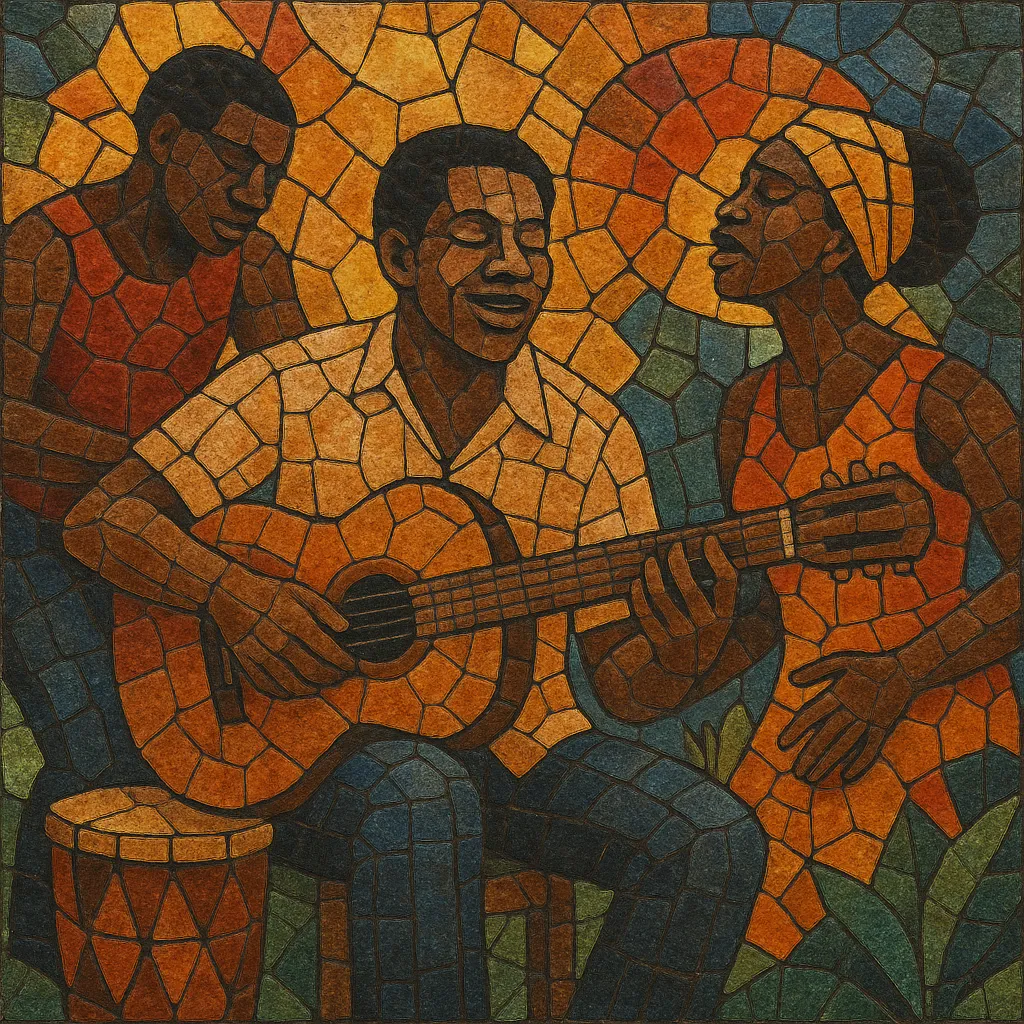
Marrabenta is an urban dance music from Mozambique, born in the neighborhoods of Lourenço Marques (now Maputo). It blends local dance rhythms and call-and-response singing with guitar-led grooves and elements brought by Portuguese colonial presence and South/Southern African popular styles.
Typically upbeat and guitar-driven, marrabenta features interlocking rhythm and lead guitar parts, buoyant bass lines, and a propulsive, lightly swung 2/4–4/4 pulse accented by hand percussion. Lyrics are commonly in Changana, Ronga, and Portuguese, often narrating everyday life, love, and social commentary.
The genre’s name is often linked to the Portuguese verb “rebentar” (to break), referencing either broken guitar strings on homemade instruments or the idea of “breaking” the dance floor—both pointing to its joyful, high-energy character.
Marrabenta emerged in the black townships of Lourenço Marques (Maputo) during the late colonial period. Musicians adapted local rhythms and melodies to guitars—often homemade—and simple percussion. The sound coalesced in the 1950s as dance bands began fusing Mozambican song forms with Portuguese popular influences and South African urban styles circulating via radio, labor migration, and coastal trade.
By the 1960s, amplified ensembles and tighter dance grooves defined the style. Guitar work adopted bright, cyclical lines with call-and-response vocals, while bass and percussion pushed a lively 2/4–4/4 feel. The scene produced charismatic singers and bandleaders who popularized marrabenta across Mozambique’s urban centers and beyond.
After independence in 1975, marrabenta became a symbol of Mozambican identity. Bands such as Orchestra Marrabenta Star de Moçambique took the genre nationwide and abroad, carrying lyrics in local languages and Portuguese that reflected social realities. Despite civil conflict and economic hardship, the style persisted on radio and in dance halls, influencing adjacent genres and attracting world-music audiences.
In the 21st century, marrabenta remains a touchstone for Mozambican popular music. Artists blend it with jazz, pop, hip hop, and electronic production while preserving its distinctive guitar lattice and danceable pulse. Annual festivals and archival projects have helped revive classic repertoires and introduce new audiences to the music’s heritage.

